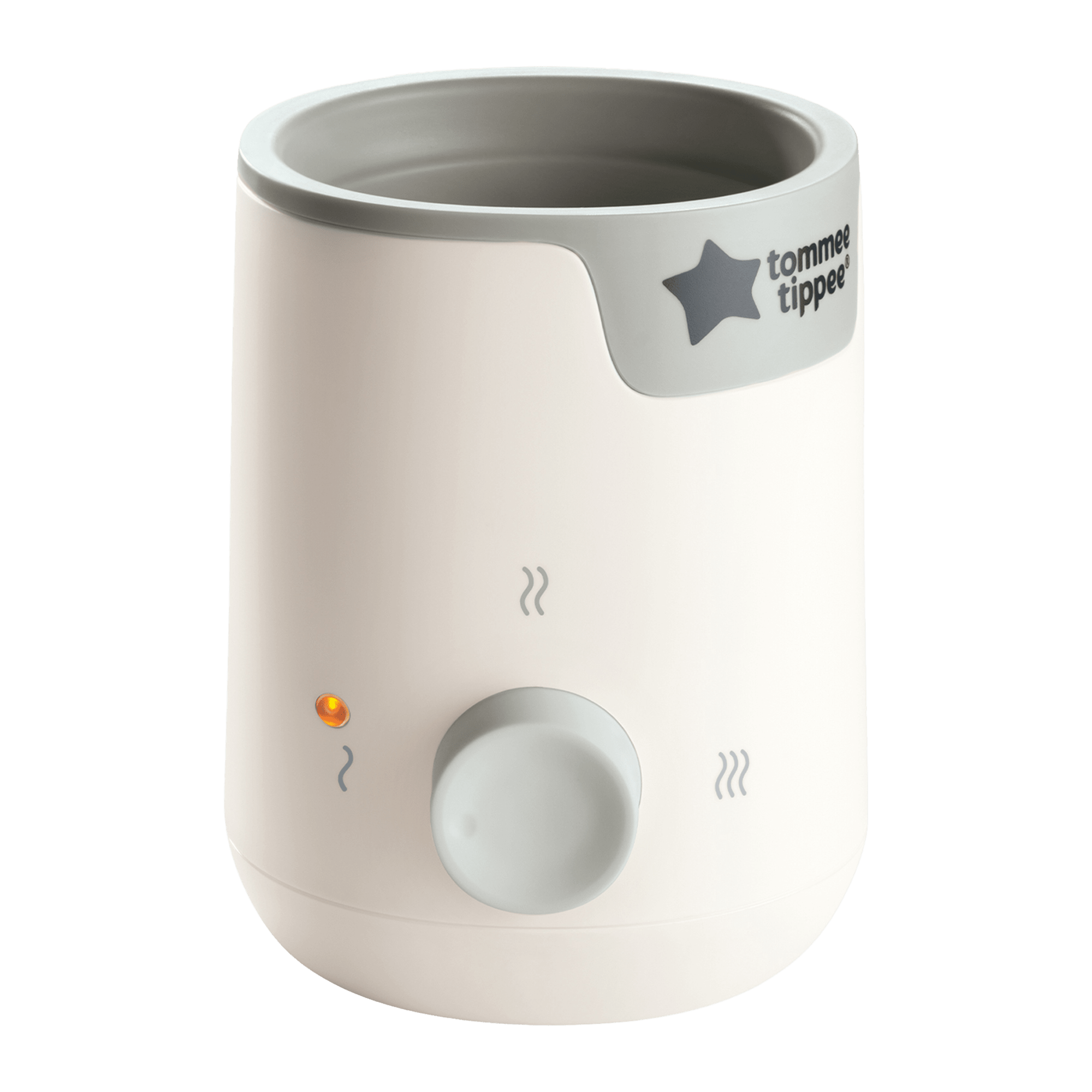Stuck on how to use one of our products?
Not sure how to clean them?
Find all the useful support information right here.

Do you have a question about using your Tommee Tippee Food and Bottle Warmer? Find the answers here.
USING YOUR FOOD AND BOTTLE WARMER
The speed at which your food and bottle warmer heats milk or food will depend on the size of the bottle or container and the starting temperature of the milk or food (e.g. room temperature 20˚C or from the refrigerator 5˚C).
We recommend that you always use setting 3 for heating up, and use setting 2 for keeping warm only. Setting 1 is a minimum setting and should not be used for warming.
DO NOT warm milk or food in your warmer for more than 30 minutes.
To warm bottles
To warm baby food jars
Heating guidelines

To clean your baby food and bottle warmer
Unplug your food and bottle warmer and allow to cool before cleaning. After each use pour away any remaining water from the base by the tipping it sideways over a sink.
Wipe clean with a damp cloth only. Do not clean with abrasive cleaners or allow to come into contact with solvents or harsh chemicals, as this could cause damage.
To descale your baby food and bottle warmer
A build-up of limescale can negatively affect the performance of your warmer. To keep it working effectively we recommend carrying out the descaling process using these frequency guidelines:
Hard water – 7 days
Medium – 14 days
Soft – 21 days
You can find out your water quality via your water provider.
1. Use a descaler that is suitable for use with stainless steel i.e. kettle, iron and coffee machine de-scaler. Use as per the manufacturer’s guidelines.
2. Alternatively, you can use white vinegar to descale your food and bottle warmer.
DO NOT use metal objects or scourers to clean your food and bottle warmer. DO NOT use bleach to clean the food and bottle warmer. DO NOT use abrasive or anti-bacterial materials.
How do I descale?
Descaling is really easy to do, simply allow your warmer to cool and unplug before descaling. We recommend using a descaler that is suitable for use with stainless steel i.e. kettle, iron and coffee machine de-scaler. And following the manufacturer’s instructions. However, you can use white vinegar if you prefer.
Why should I descale?
The descaling process removes deposits of calcium and other minerals within the system that may affect its performance or shorten the life of the warmer.
How often should I descale?
This really does depend on the area in which you live. If the water in your area is hard then you may need to descale every 7 days. If it’s medium, then you’ll need to descale every 14 days and if the water is soft it’s around every 21 days. You can find out the quality of your water from your water provider. How quickly scale builds up in your kettle is also a good clue to how frequently you will need to descale.
Can I use pouches in this warmer?
No, this warmer is purely for bottles or jars of food. However, we do have our Advanced Bottle and Pouch Warmer for pouches.
How long will it take for a bottle/jar to warm?
This all depends on the size of the bottle or jar and the temperature of the contents. It also depends on the temperature of the water you add to the warmer.
Here’s our guide to times:
Can I use glass or silicone bottles with this warmer?
Yes.
